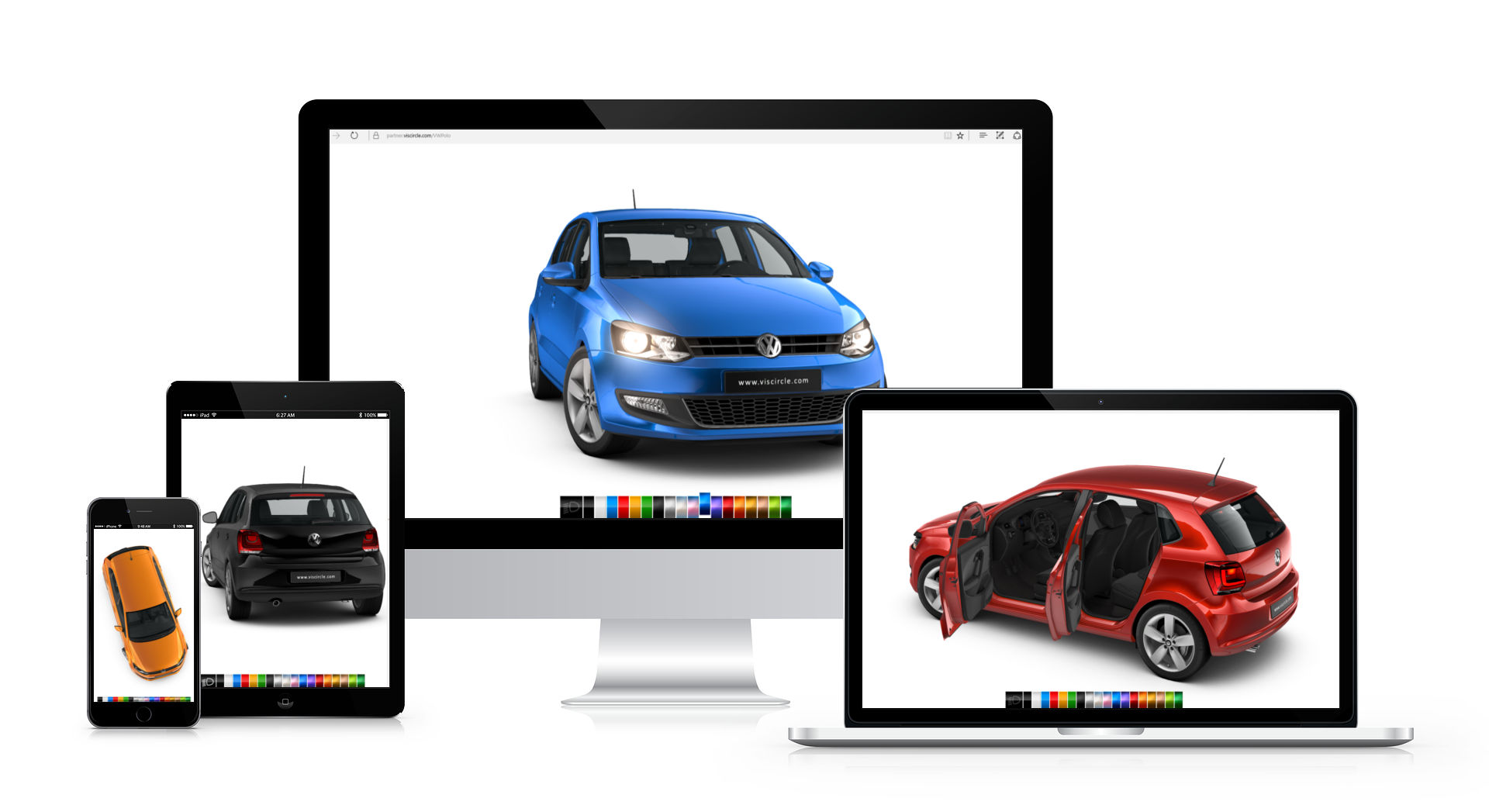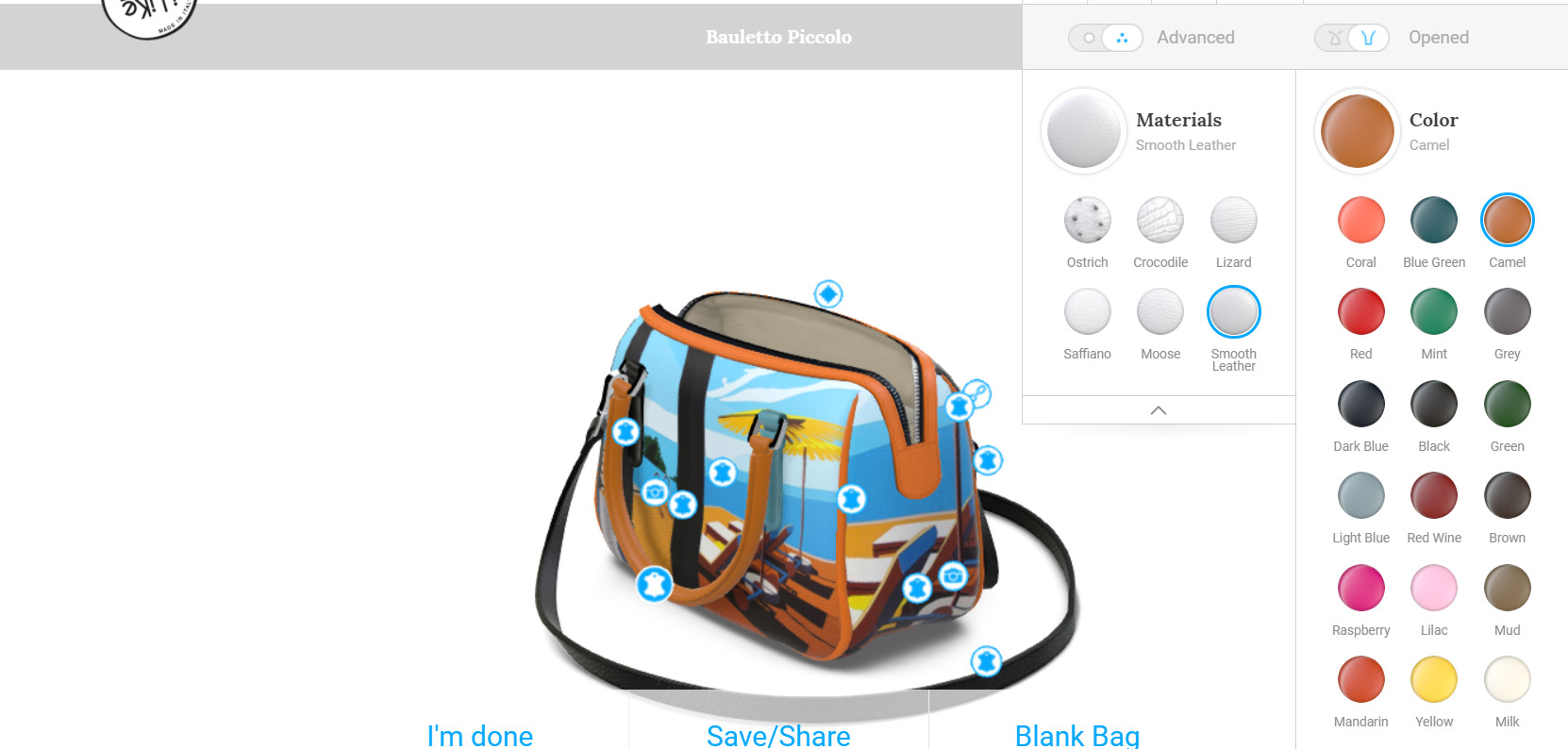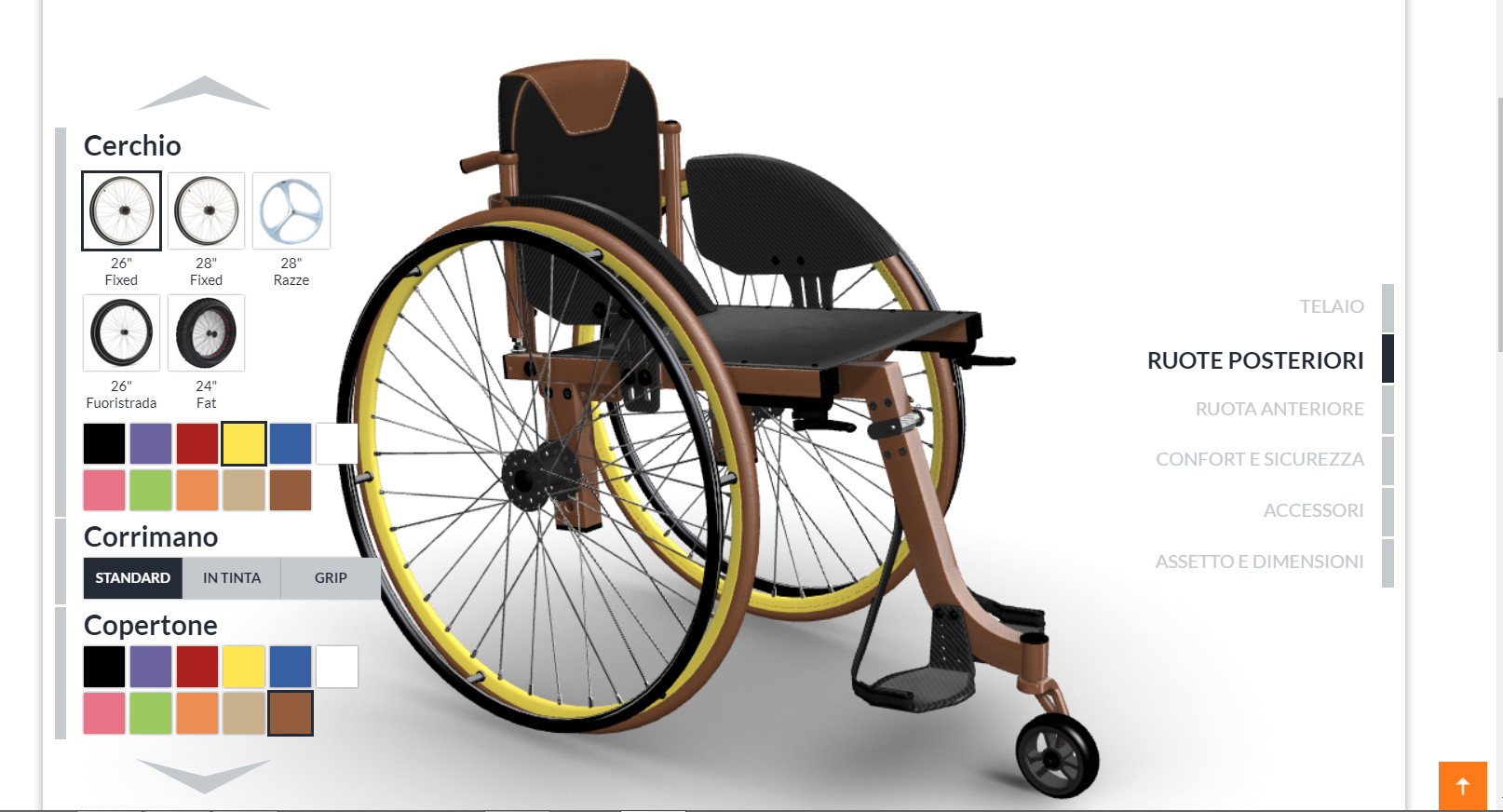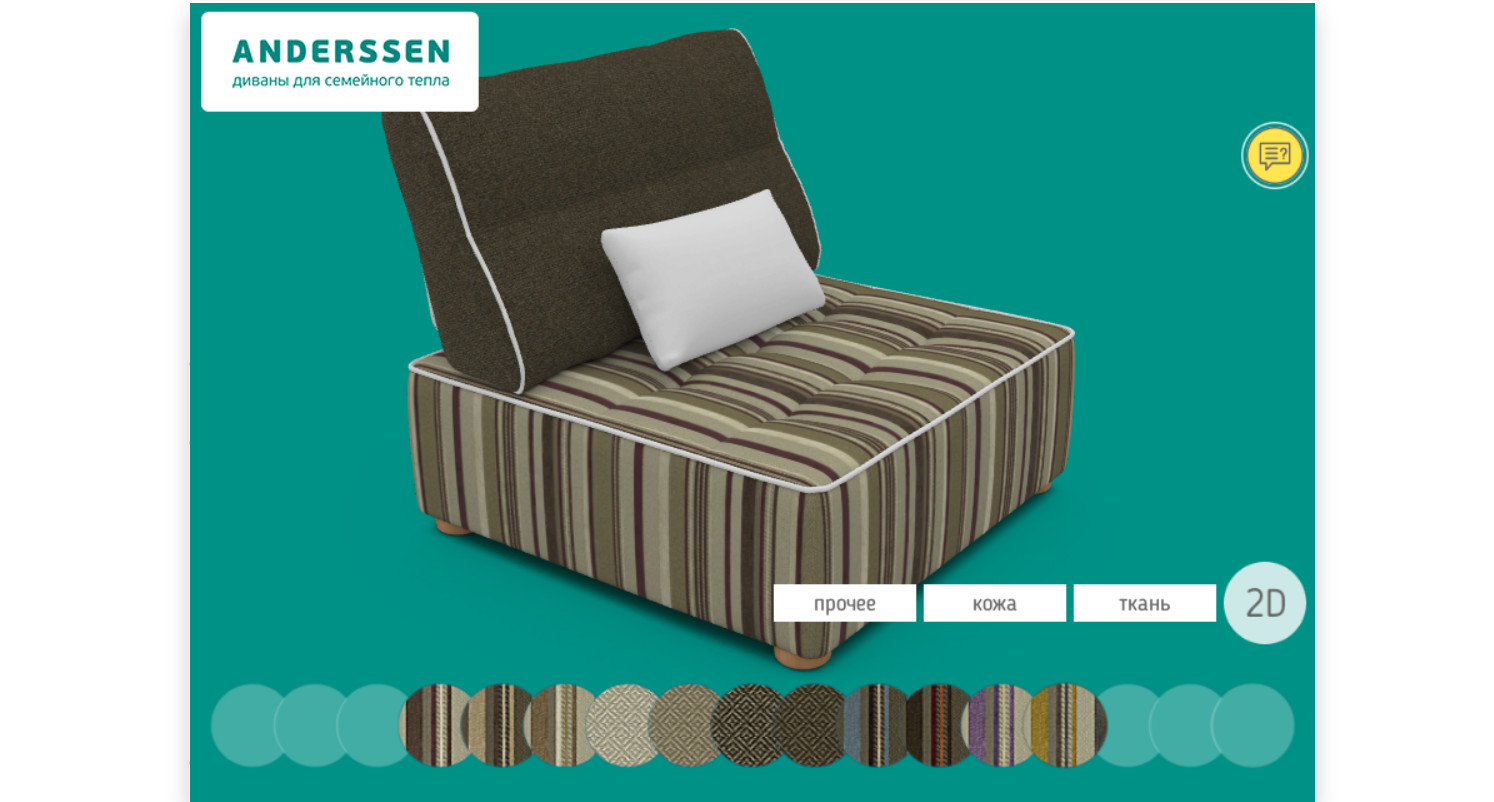3D configurators. Mass psychosis or need?
Recently, well-known and not very well-known companies have increasingly begun to use 3D to provide information about their products or the ability to configure goods for themselves. Statistics proves relentlessly - the time for browser-based 3D has come, and the developers offer many ready-made solutions.
Every year, more and more Internet business participants rely on the promotion of their products using 3D applications that open directly in a web browser. On the one hand, 3D demonstrates a “product face” much more attractively, on the other hand, it requires quite serious technical capacities from user devices. However, even cheap mobile devices and office computers already allow you to view 3D graphics on the site, albeit with an average visual quality.
So, 3D is already a familiar feature of modern websites and, whether we like it or not, it is available and offered for everyday use.

')
Recently, I downloaded the game Warhammer: End Times - Vermintide, where there was a 40 gigabyte installation package. Yes, this is a visually beautiful game, but 40 gigabytes of my traffic! Of course, this is completely unacceptable for 3D applications in a web browser.
Many developers quietly cover their eyes to such a problem and “ask” customers not to “juggle on bytes”. That's the question, are we ready to admire cool 3D scenes in a web browser, but pay for it with our time and use more powerful hardware?

This is a screenshot of the Toyota Camry's 3D configurator, which is located on the company's dealer site in Australia. A typical representative of the family of autoconfiguration, where the user can determine the parameters of the future of his car. This is not a promotion, not brand upgrading or just a stylish demonstration, but a full-featured configurator whose task is to pick up a car and sell it. Coloring, engine type, modification, salon and other thingies, and at the end the exit to the manager with a fully prepared price list.
Of course, a demonstration of goods, where everything looks very realistic and you can consider any details - a winning option compared to conventional 2D configurators, but on condition that you have fast internet and a powerful enough computer.
The Australian 3D configurator shows how beautiful and spectacular, and most importantly, the process of choosing a car can be fascinating. That's just loading the program is not fast and this is understandable, because beauty requires sacrifice, and in our case a quick connection.
However, it is not necessary to go to extremes and cross out beautiful, but heavy 3D from everyday life. In the end, many have unlimited and high-speed Internet rates, and the iron quietly turns the same Warhammer.

This is the brainchild of a craftsman from Italy, who sews handmade bags to order. His business is the main source for living. Therefore, the configurator of the bags is made extremely carefully, well optimized, and most importantly - performs its functions, i.e. fulfills the money invested in its creation. I remember a joyful tweet from laikailike, where he shared the first incoming order from the configurator. A week later, the bag went to the client, and in the instagram there was a photo of the finished product. And yes, the real bag was indistinguishable from its 3D girlfriend.
I mean, this configurator is not easy to tick off, but is actually a working communication tool between the customer and the performer. The developers had to work hard and create not only a functional program, but also unusually accurate materials and models corresponding to the originals. Of course, not all 3D configurators can boast of good realism, but here both of the previously considered examples differ in decent visualization.
There is another aspect that should be considered when discussing 3D configurators - the cost of development.
It is clear that you can not compare the costs of the configurator of machines from a large company and the selection of bags from laikailike, a tiny organization. In the second case, the costs must be justified and recaptured at the maximum possible time. I don’t know how much laikailike paid the development studios for their application, but they obviously had to fork out for the commercial license of the engine (both configurators are made using Blend4Web, where a commercial license costs about $ 1,000). However, judging by the records in social networks, laikailike has already managed to recapture the estimated costs of creation, i.e. in their case, the 3D configurator is a real business mechanism.
We all tried at least once, and maybe someone does it all the time, buy goods with delivery in online stores. This is convenient, and sometimes cheaper to shop at a regular store. However, there is a category of citizens for whom online purchases are the most optimal way to receive goods. The conversation is about people with disabilities. And if ordinary food or consumer products are easy to select, then more information is required to purchase a unique product. In this case, 3D configurators are better able to convey the features of the product than ordinary images or even video.

At the recently held Blender Conference 2017, there was a report on the development of a unique interactive configurator project that would allow people with disabilities to order vehicles with precise technical parameters. This was done and now there is a special resource that allows you to buy this equipment without leaving your home.
The developers have provided all options for changing wheelchairs for different features and customer requirements. And these are not the dirty teeth of colors or decorative elements (although there is one). The client can choose the exact position of the structural elements to suit his needs: the size of the wheels and their width, the angle of inclination of the seat, the height of the foot rest and much more. All this is displayed in the browser window in real time. You can explore the future purchase from all sides, both from an aesthetic point of view and practical rationalism. Then pay for the purchase and get home delivery. It is easy to understand that such a 3D configurator greatly facilitates the choice of an aggregate, rather than faceless tables with numbers or flat photos.
You can not go past another technology that can be called a transition between 3D and two-dimensional images. It has its advantages, but the main thing is simple requirements for the user's hardware. The talk is about 360 ° panoramas.

This is a screenshot of the 3DTuning project configurator . At first glance it seems that a high-quality 3D presentation is used here. However, it is worth spinning the car in the scene, as it becomes clear - not 3D.
Panorama 360 ° is a great way to demonstrate an object in a volume that requires a minimum of programmer work and fairly weak computing power of users' hardware. But, despite its apparent simplicity, there are pitfalls.
To create such “3D” demonstrations, it is required to render models from different sides to produce static images and the more such intermediate stages, the better the result will be. This requires considerable time, since the rendering of just one image of a complex model can take long hours. This should take into account the increased downloadable traffic, which will increase proportionally to improve the quality of the presentation. The situation is even worse if you want to show some changes to the object when choosing a configuration, for example, changing the color of the car. Here you will have to create another package of render graphics, which will affect traffic consumption. Therefore, configurators built on render sequences are very limited in their visual diversity.
However, configurators built on this technology are quite popular and are not in a hurry to give up their positions to their 3D counterparts.
Equally with demand, supply begins to grow. The law of economics here has not been canceled. On the Internet, there is a mass of freelancers and individual studios that specialize in creating only 3D configurators. At the same time, a variety of tools are used, starting with the free ThreeJS and ending with expensive, specialized frameworks.

As an example, I will give another configurator that demonstrates 3D functionality to clients in a web browser window. The ease of creating the final type of product by dragging and dropping elements is simply amazing. This is what 3D can give compared to static media formats!
In total, it seems that 3D in browsers has begun its triumphant offensive ...
3D configurators evoke a double feeling. On the one hand, they are beautiful, comfortable, and often cause a "wow effect." On the other hand, they are heavy and require appropriate iron. Everyone decides for himself and selects the optimal visualization scheme, in the form of real 3D or its render version. However, it becomes clear that the world of configurators on the Internet is shifting toward three-dimensionality and this becomes an avalanche-like process in which more and more players of various levels are involved.
Every year, more and more Internet business participants rely on the promotion of their products using 3D applications that open directly in a web browser. On the one hand, 3D demonstrates a “product face” much more attractively, on the other hand, it requires quite serious technical capacities from user devices. However, even cheap mobile devices and office computers already allow you to view 3D graphics on the site, albeit with an average visual quality.
So, 3D is already a familiar feature of modern websites and, whether we like it or not, it is available and offered for everyday use.

')
Heavy content, but cool picture?
Recently, I downloaded the game Warhammer: End Times - Vermintide, where there was a 40 gigabyte installation package. Yes, this is a visually beautiful game, but 40 gigabytes of my traffic! Of course, this is completely unacceptable for 3D applications in a web browser.
Many developers quietly cover their eyes to such a problem and “ask” customers not to “juggle on bytes”. That's the question, are we ready to admire cool 3D scenes in a web browser, but pay for it with our time and use more powerful hardware?

This is a screenshot of the Toyota Camry's 3D configurator, which is located on the company's dealer site in Australia. A typical representative of the family of autoconfiguration, where the user can determine the parameters of the future of his car. This is not a promotion, not brand upgrading or just a stylish demonstration, but a full-featured configurator whose task is to pick up a car and sell it. Coloring, engine type, modification, salon and other thingies, and at the end the exit to the manager with a fully prepared price list.
Of course, a demonstration of goods, where everything looks very realistic and you can consider any details - a winning option compared to conventional 2D configurators, but on condition that you have fast internet and a powerful enough computer.
The Australian 3D configurator shows how beautiful and spectacular, and most importantly, the process of choosing a car can be fascinating. That's just loading the program is not fast and this is understandable, because beauty requires sacrifice, and in our case a quick connection.
However, it is not necessary to go to extremes and cross out beautiful, but heavy 3D from everyday life. In the end, many have unlimited and high-speed Internet rates, and the iron quietly turns the same Warhammer.

This is the brainchild of a craftsman from Italy, who sews handmade bags to order. His business is the main source for living. Therefore, the configurator of the bags is made extremely carefully, well optimized, and most importantly - performs its functions, i.e. fulfills the money invested in its creation. I remember a joyful tweet from laikailike, where he shared the first incoming order from the configurator. A week later, the bag went to the client, and in the instagram there was a photo of the finished product. And yes, the real bag was indistinguishable from its 3D girlfriend.
I mean, this configurator is not easy to tick off, but is actually a working communication tool between the customer and the performer. The developers had to work hard and create not only a functional program, but also unusually accurate materials and models corresponding to the originals. Of course, not all 3D configurators can boast of good realism, but here both of the previously considered examples differ in decent visualization.
There is another aspect that should be considered when discussing 3D configurators - the cost of development.
It is clear that you can not compare the costs of the configurator of machines from a large company and the selection of bags from laikailike, a tiny organization. In the second case, the costs must be justified and recaptured at the maximum possible time. I don’t know how much laikailike paid the development studios for their application, but they obviously had to fork out for the commercial license of the engine (both configurators are made using Blend4Web, where a commercial license costs about $ 1,000). However, judging by the records in social networks, laikailike has already managed to recapture the estimated costs of creation, i.e. in their case, the 3D configurator is a real business mechanism.
Social aspect
We all tried at least once, and maybe someone does it all the time, buy goods with delivery in online stores. This is convenient, and sometimes cheaper to shop at a regular store. However, there is a category of citizens for whom online purchases are the most optimal way to receive goods. The conversation is about people with disabilities. And if ordinary food or consumer products are easy to select, then more information is required to purchase a unique product. In this case, 3D configurators are better able to convey the features of the product than ordinary images or even video.

At the recently held Blender Conference 2017, there was a report on the development of a unique interactive configurator project that would allow people with disabilities to order vehicles with precise technical parameters. This was done and now there is a special resource that allows you to buy this equipment without leaving your home.
The developers have provided all options for changing wheelchairs for different features and customer requirements. And these are not the dirty teeth of colors or decorative elements (although there is one). The client can choose the exact position of the structural elements to suit his needs: the size of the wheels and their width, the angle of inclination of the seat, the height of the foot rest and much more. All this is displayed in the browser window in real time. You can explore the future purchase from all sides, both from an aesthetic point of view and practical rationalism. Then pay for the purchase and get home delivery. It is easy to understand that such a 3D configurator greatly facilitates the choice of an aggregate, rather than faceless tables with numbers or flat photos.
Pseudo "3D"
You can not go past another technology that can be called a transition between 3D and two-dimensional images. It has its advantages, but the main thing is simple requirements for the user's hardware. The talk is about 360 ° panoramas.

This is a screenshot of the 3DTuning project configurator . At first glance it seems that a high-quality 3D presentation is used here. However, it is worth spinning the car in the scene, as it becomes clear - not 3D.
Panorama 360 ° is a great way to demonstrate an object in a volume that requires a minimum of programmer work and fairly weak computing power of users' hardware. But, despite its apparent simplicity, there are pitfalls.
To create such “3D” demonstrations, it is required to render models from different sides to produce static images and the more such intermediate stages, the better the result will be. This requires considerable time, since the rendering of just one image of a complex model can take long hours. This should take into account the increased downloadable traffic, which will increase proportionally to improve the quality of the presentation. The situation is even worse if you want to show some changes to the object when choosing a configuration, for example, changing the color of the car. Here you will have to create another package of render graphics, which will affect traffic consumption. Therefore, configurators built on render sequences are very limited in their visual diversity.
However, configurators built on this technology are quite popular and are not in a hurry to give up their positions to their 3D counterparts.
Demand creates supply
Equally with demand, supply begins to grow. The law of economics here has not been canceled. On the Internet, there is a mass of freelancers and individual studios that specialize in creating only 3D configurators. At the same time, a variety of tools are used, starting with the free ThreeJS and ending with expensive, specialized frameworks.

As an example, I will give another configurator that demonstrates 3D functionality to clients in a web browser window. The ease of creating the final type of product by dragging and dropping elements is simply amazing. This is what 3D can give compared to static media formats!
In total, it seems that 3D in browsers has begun its triumphant offensive ...
Personal opinion
3D configurators evoke a double feeling. On the one hand, they are beautiful, comfortable, and often cause a "wow effect." On the other hand, they are heavy and require appropriate iron. Everyone decides for himself and selects the optimal visualization scheme, in the form of real 3D or its render version. However, it becomes clear that the world of configurators on the Internet is shifting toward three-dimensionality and this becomes an avalanche-like process in which more and more players of various levels are involved.
Source: https://habr.com/ru/post/355164/
All Articles